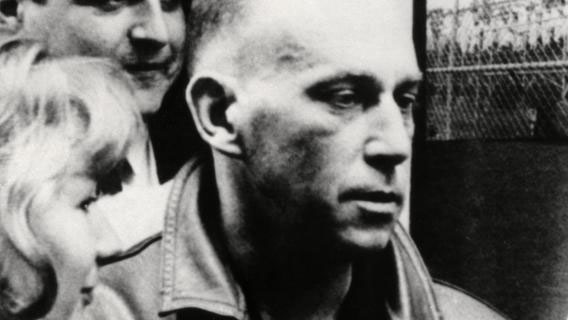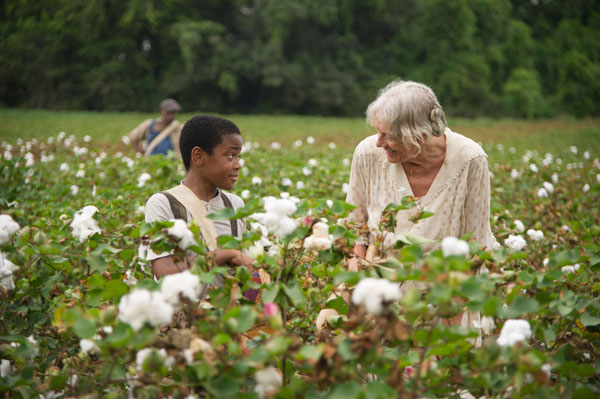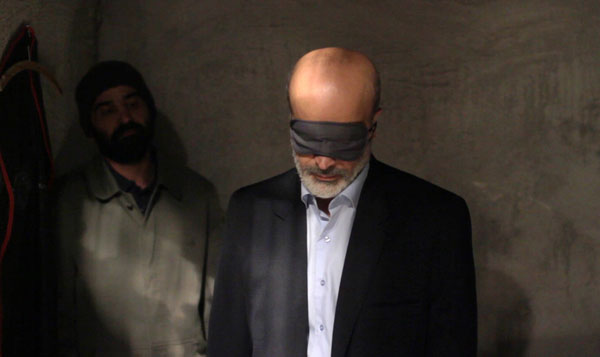One day before the exhibition Chris Marker: Guillaume-en-Égypte opens at the MIT List Visual Arts Center on October 17, the Centre Pompidou in Paris will open Planète Marker, a show of films, installations, and multimedia works on view through December 16. Chrismarker.org has posted the introduction by Raymond Bellour, whom the site’s “Blind Librarian,” Daniel L. Potter, considers to be “the greatest commentator on Marker, and certainly among the most innovative film theorists of our time.” Bellour: “Chris Marker came up with a unique way of relating the texts he ceaselessly wrote with the images he collected throughout the world—both images shot from life and excerpts from multiple archives…. The result was an inseparable meld: a primordial condition for this form of subjective essay. Marker was one of the great inventors of this genre—perhaps the greatest, continually subjecting the documentary approach to the fictional part that enabled him to develop his thread, while always talking to the ‘other’—his virtual reader/viewer—as though to a fully alive being.”
All arts “are only great—really great—in their primitive state.” Jean Renoir in 1948, as translated by Ted Fendt.
“While Peephole began as an experiment in viewing, thinking and writing about film, it strikes me that what each issue of this magazine does is trace a set of cinephiliac moments,” writes editor Whitney Monaghan, introducing the second issue. “This time we encounter Victor Bruno‘s ecstasy at the lighting of John Ford‘s constructed ‘red-haired sunset’ in She Wore a Yellow Ribbon alongside John Edmond‘s consolation at the grounded tracking shot in Anthony Mann’s Man of the West. Beside these sits I.Q. Hunter‘s puzzlement over the fake snow in his interpretation of the final scene of Stanley Kubrick’s A Clockwork Orange and Hannah Joyner‘s heartbreak at Penelope Cruz’s face as she is pushed down the stairs for the second time in Pedro Almodóvar’s Broken Embraces. And finally, we encounter Matthew Sini‘s cinephiliac moment after his encounter with the big blue schlong in Zack Snyder’s Watchmen.”
Via The Seventh Art, Joachim Trier talking about his five favorite films; first on the list is Nicholas Roeg’s Don’t Look Now (1973)
John Stezaker to Nicolas Roeg: “Your films are never about what they seem to be about at first. Don’t Look Now fascinates me for reasons I can’t explain. It’s both mainstream and an elegy to film noir, and I love it for that.” Roeg: “There’s a marvelous line in John Huston’s The Treasure of the Sierra Madre (1948): ‘You don’t see the gold beneath your very feet.’ The prospectors, played by Humphrey Bogart and Tim Holt, don’t think they’ve found any gold, but when their much older companion dances at the foot of the mountains they glimpse it in the sand under his feet. It’s like a premise to the film.”
Also in the new frieze, Ara H. Merjian on Pasolini Roma: “The paradoxes of his oeuvre—its confusing admixtures of materiality and metaphysics—resist any simple recapitulation. This exhibition navigated those ironies deftly.”
“Celebrating Laura Mulvey: Or, Film Studies with Poetic License” is Catherine Grant‘s latest entry at Film Studies for Free, collecting dozens of links to work by and about the renowned scholar. The occasion is “the British Film Institute’s release of a new DVD/BluRay disc of Riddles of the Sphinx, the hugely significant and original feminist film Mulvey co-directed and produced in 1976/77 with her partner [Peter] Wollen (the disk also contains their first film together: Penthesilea: Queen of the Amazons [1974]).”
Not Coming to a Theater Near You has launched its tenth—and last—annual 31 Days of Horror extravaganza. Rumsey Taylor: “We’ll be updating the site daily and enlarging our archive of horror reviews, which spans nearly a full century, encompasses films from dozens of countries, and ranges from low-budget debuts, titles exclusive to the VHS format, and popular Hollywood favorites.”
“The two big racially themed movies of the year, Lee Daniels’ The Butler and Steve McQueen’s 12 Years a Slave, are notable for the urgency and intensity with which they unpack stories of the past, as if delivering their news of brutal bondage and stubborn discrimination for the first time,” writes A.O. Scott in the New York Times. “And one of the strange effects of this country’s anxious, confused, hopeful and delusional relationship to its history of racism is that such narratives often do feel like news, or like efforts to overcome willful amnesia.”
“No matter how much anxiety its advent may have caused, I have the internet to thank for the fact that I still have anything resembling a career.” The Observer runs an excerpt from Mark Kermode‘s new book, Hatchet Job: Love Movies, Hate Critics.
In his latest “Flashback” column for Criterion, Peter Cowie looks back on his various encounters with Andrzej Wajda, beginning in 1979.
Peter Bogdanovich wraps up his look at the “72 Raoul Walsh entries from my 1952-1970 movie card-file.”
At the Chiseler, Imogen Smith reviews three films in which Ida Lupino played nightclub singers, “canaries very much at home in the coal mine of noir.” And at Movie Morlocks, Susan Doll looks back on the career of Kay Francis.
Frank Serpico’s living the quiet life in the town of Stuyvesant on the Hudson River. Matthew Schaer catches up with him for New York: “So perfectly did Pacino capture Serpico’s Brooklyn bonhomie—the off-kilter smile, the sharp laugh, the lengthy but genial soliloquies on the crooked paths of cosmic justice—that you can close your eyes while the real Serpico is talking and expect to find Pacino when you open them again.”
In other news. When Mohammad Rasoulof landed in Tehran on September 19, having lived in Hamburg for the previous two years or so, he was promptly detained, his passport confiscated. Now Iranian authorities will allow Rasoulof to attend the Hamburg Film Festival, where Manuscripts Don’t Burn is screening tonight. Vadim Rizov has the full story at the Dissolve.
“A Three Stooges short previously thought lost in a 1967 fire has just received its first screening since being rediscovered in a garden shed in Australia,” reports the Guardian‘s Andrew Pulver.
“Venezuelan Mariana Rondon’s Bad Hair won San Sebastian’s top Golden Shell on Saturday,” reports Variety‘s John Hopewell. Jay Weissberg: “Set in a working-class housing project in Caracas, the pic has a narrative intimacy fed by larger comments on Venezuela’s failed sociopolitical experiment, so while Rondon’s focus is the struggle of wills between a boy awakening to homosexual feelings and his embittered mother, the helmer invests their collision with a powerful specificity.”
“Republican National Committee chairman Reince Priebus declared a ‘major victory’ against the mainstream media after CNN and NBC canceled their planned Hillary Clinton projects, but he also gave a reminder of why he so fiercely fought against the documentary and miniseries.” Ted Johnson explains in Variety.
New York. MoMA’s Dante Ferretti: Design and Construction for the Cinema, an exhibition dedicated to the renowned production designer most famous for his work with Scorsese, Fellini, and Pasolini, will be on view through February 9 and is accompanied by the series Dante Ferretti: Designing for the Big Screen. Nick Pinkerton for Artforum: “One of the last Old Masters, Ferretti still supervises the physical construction of vast sets from scratch, after the classical Intolerance model… Ferretti builds worlds that are bound to be destroyed—or at the very least neglected. For example: The chandeliers from Pasolini’s Salò, or the 120 Days of Sodom (1975), pendulant and suggestive of penetration, now hanging in MoMA’s entry lobby, were only discovered in a dusty storage room after an epic search.”
Berlin. Cinema of Outsiders, a series revisiting American independent films of the 80s curated by Hannes Brühwiler, opens tonight at Zeughaus Kino with Bette Gordon‘s Variety (1983).
The Arsenal‘s Jacques Rivette retrospective opens tomorrow with Around a Small Mountain (2009) and will include both Out 1, Noli me tangere (1970/1990), the complete 13-hour version (there’ll be breaks and snacks), and Out 1: Spectre, the 4.5-hour cut.
In the works. Willem Dafoe will play Andy Warhol in Bertrand Bonello’s Saint Laurent, “a biopic about the famed fashion designer,” reports the Playlist‘s Kevin Jagernauth. The film “features Gaspard Ulliel in the title role, with Olga Kurylenko, Jérémie Renier, Léa Seydoux, Louis Garrel, Valeria Bruni Tedeschi, and Amira Casar in support. Cameras are rolling on the film which is already slated for a May 14, 2014 release in France. Can you say Cannes?”
Also, Forest Whitaker is set to play Colin Powell. “The script comes from Ed Whitworth, whose script for Reykjavik, about the 1986 Reykjavik summit meeting between Ronald Reagan and Mikhail Gorbachev, has already attracted Michael Douglas and Christoph Waltz.”
“Hugh Jackman, at the Zurich Film Festival to receive the Golden Icon Award, confirmed he has been cast in Neill Blomkamp’s new film, Chappie,” reports Michael Rosser for Screen Daily. It also looks as if Michael Gracey’s The Greatest Showman on Earth, with Jackman playing P.T. Barnum, is also a go.
More browsing? John Wyver‘s got a fresh round.
For news and tips throughout the day every day, follow @KeyframeDaily on Twitter and/or the RSS feed. Get Keyframe Daily in your inbox by signing in at fandor.com/daily.







